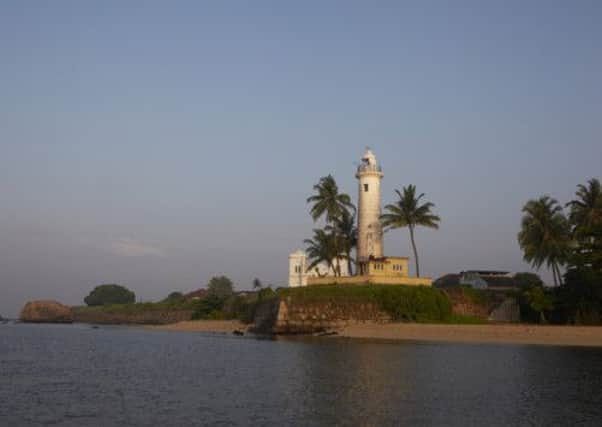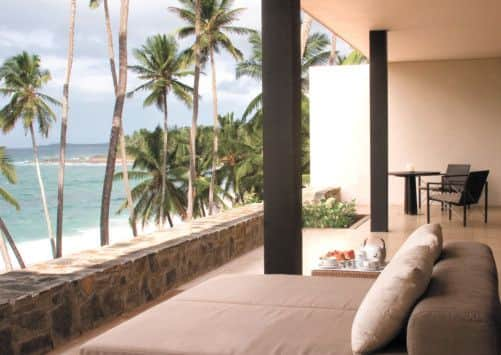Turn over a new leaf


Sri Lanka’s famous tea has a lot to live up to – we do, after all, hail from Yorkshire. Which is why my partner and I decided to save its blushes, bypass its much-publicised tea plantations and make instead for the lush islet’s less-visited deep south.
I say “lush” for good reason – we made the brow-raising choice to head there in rainy season (May to August). For fair-weather travellers, December to March is actually the best time to go, when the sun’s rays will be the only thing to beat down on you. But, being used to British summers, we reasoned, how bad can it be? It paid off: showers fell in occasional short, warm bursts, while an absence of tousle-haired backpackers made us feel like we’d struck our own private paradise.
Advertisement
Hide AdAdvertisement
Hide AdAfter a 12-hour flight from the UK to Colombo, you’re then in for quite a road trip due to the country’s underdeveloped infrastructure. Nowadays, though, you can slip straight onto the Southern Express Highway – a new motorway that slices through the country, cutting the usual four-hour drive from capital-to-south in half (and I can vouch for the smoothness of the roads; not a buttock-clenching bump in sight).


The first stop on our tea plantation-free agenda was Fort Galle. A Unesco World Heritage Site, I’d heard that the 400-year-old port town had bags of bygone charm. Better still, for those who don’t like to do holidays by halves (guilty as charged) it’s home to Amangalla – an Aman Resort hotel housed in a cream, colonial manor that stands like a beacon of luxury within the fort’s crumbling walls.
Formerly a Dutch governor’s mansion, inside it still felt like an aristocrat’s private abode: we stepped onto original mosaic floors to soaring ceilings, antique furniture and 1920s tunes tinkering in every room. Couple its period charm with an emerald-green pool, lofty veranda on which to take high tea and a standout spa where even men can pamper themselves silly (think old-fashioned shaves on tea-planters’ chairs overlooking 200-year-old gardens) and leaving took some effort.
When holiday guilt crept in (“we really should be doing something, shouldn’t we..?”) we set off to explore the ramparts. “The best way to do so is on foot,” our butler Prasanna advised, leading us outside, where a bullock-led cart ambled by. I took a second look. Had time stood still? There was no sign of cars, no mod cons, rather food carts and fruit stands, smartly-dressed school children and old spice warehouses, all hugged by the fort’s walls (stretch your neck and you can see the ink-blue Indian Ocean lapping on the other side). With the twee town contained by walls, it’s impossible to get lost – and for the truly useless, your sympathetic butler will present you with an illustrated map, as he did for us.
Advertisement
Hide AdAdvertisement
Hide AdAs we meandered, we heard how the Dutch built the fort walls in the 1600s to protect the town’s precious gems and resources from rival colonial powers. Today, many of the centuries-old houses are occupied by antique shops, jewellers and boutiques – each one whitewashed and crumbling or pastel-hued and peeling (it’s very “shabby chic”). The result is great shopping. “We have the most beautiful stones in town,” beamed a toothless shopkeeper who ushered us inside his store. True or not, I left with a pair of peridot earrings, their stones Sri Lankan green – a perfect reminder of the town. (Empty-pocketed, my partner was less convinced…)
When night fell, Amangalla always enticed us back with the promise of sundowners (taken on the top floor, you can gaze over the town’s red gambrel rooftops as you sip) and delicious Sri Lankan curries. But, it’s well worth leaving such creature comforts behind to clamber on to one of the tiny tuk tuks that speed through the ramparts daily (trust me, there’s no way of doing this gracefully).
Once aboard, we sped to the coastal village of Unawatuna to see the blond beaches that attract surfers year on year like bees to honey.
We snaked our way through narrow streets, catching sight of shops, cafes, budget B&Bs and endless beachside eateries serving up modest meals. We stopped (with a jolt) at the Kingfisher, where we pulled up plastic pews on the sand, our toes within a wave’s break of the sea, and tucked into just-barbecued fish served whole with a chunk of lemon.
Advertisement
Hide AdAdvertisement
Hide AdIf spending your entire trip traipsing round colonial towns isn’t your cup of tea, you can team a stay at Fort Galle with a second stop-off at Amangalla’s sister property, Amanwella, for sun, sea, sand and surf. We did just that, an hour-and-a-half’s drive sending us deeper into the pea-green south to the sleepy fishing village of Tangalle. There Amanwella’s striking glass façade stands atop an elevated coconut grove, poking through tropical fauna.
Admittedly, little seemed to happen in this tranquil town, so you need a resort like Amanwella to occupy your days – its private, crescent-shaped cove is an idyllic spot for sun-lounging, snorkelling and private surf lessons (though, after an hour, our battered boards and egos told us it was time to throw in the towel). If you want to head further afield, December onwards is the best time to go, when you can watch hundreds of marine turtles nesting by moonlight (a real natural spectacle). Set sail for Weligama Bay, meanwhile, you’ll be in one of the world’s best spots to witness the largest mammal on the planet – the blue whale. (Picture a creature 100-feet-long and you’re on the right track.)
For foodies, the eating out options in this strip of the south are pretty basic (and possibly limited to either the very brave or the very hard of stomach), but Amanwella gives a superb excuse to swap your battered beachwear for your finest threads before dining out on its spectacular sea-facing terrace.
So, there is life beyond Sri Lanka’s tea plantations. And while I’m sure it’s far from grim in the north, with unspoilt beaches, historic sites and stunning boltholes, it’s nothing short of splendid down south. Go, while the roads are still smooth…
Getting there
Advertisement
Hide AdAdvertisement
Hide AdFlights: from the UK to Colombo usually entail one to two stop-offs.
From London: Fly from London Heathrow to Colombo Bandaranaike Airport (CMB) in 14 hours 30 minutes via Mumbai with Jet Airways. Fly from Stansted to CMB in 15 hours 30 mins, via Dusseldorf and Abu Dhabi, with Air Berlin and Etihad Airways.
Closer to home: Fly from Manchester to CMB in 13 hours 20 minutes via Abu Dhabi with Etihad Airways.
For Amangalla or Amanwella: www.amanresorts.com, call 00 800 2255 2626.